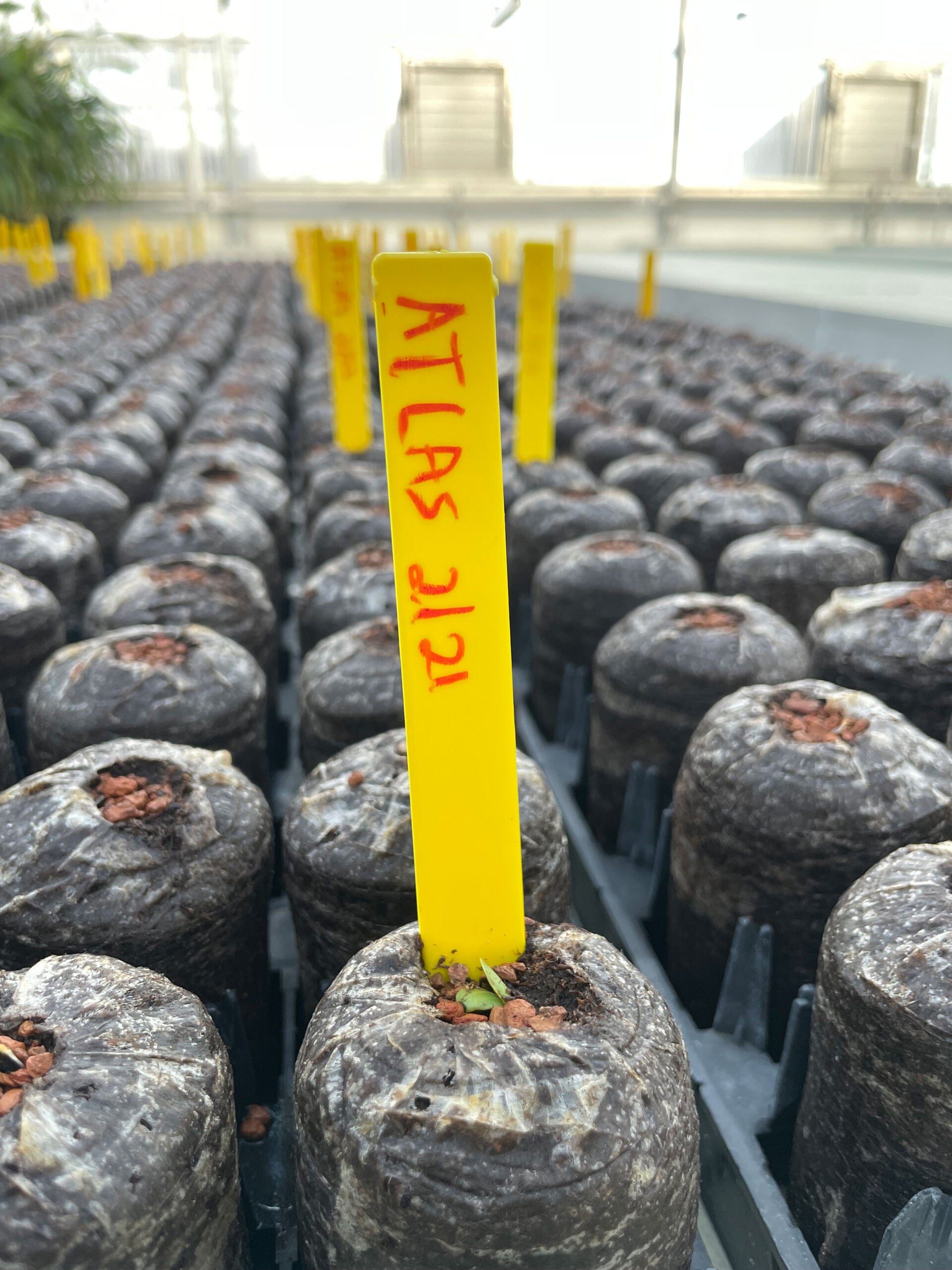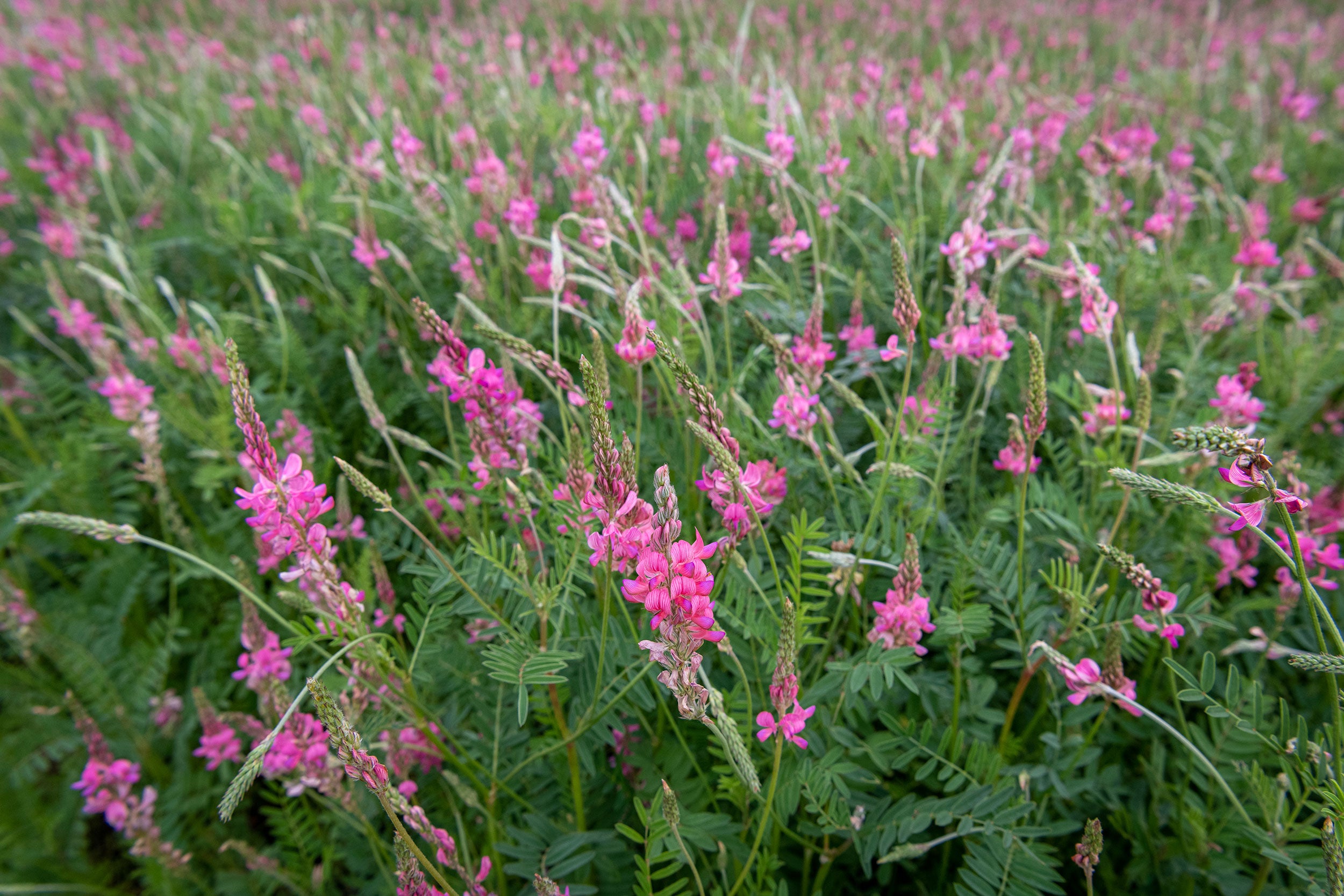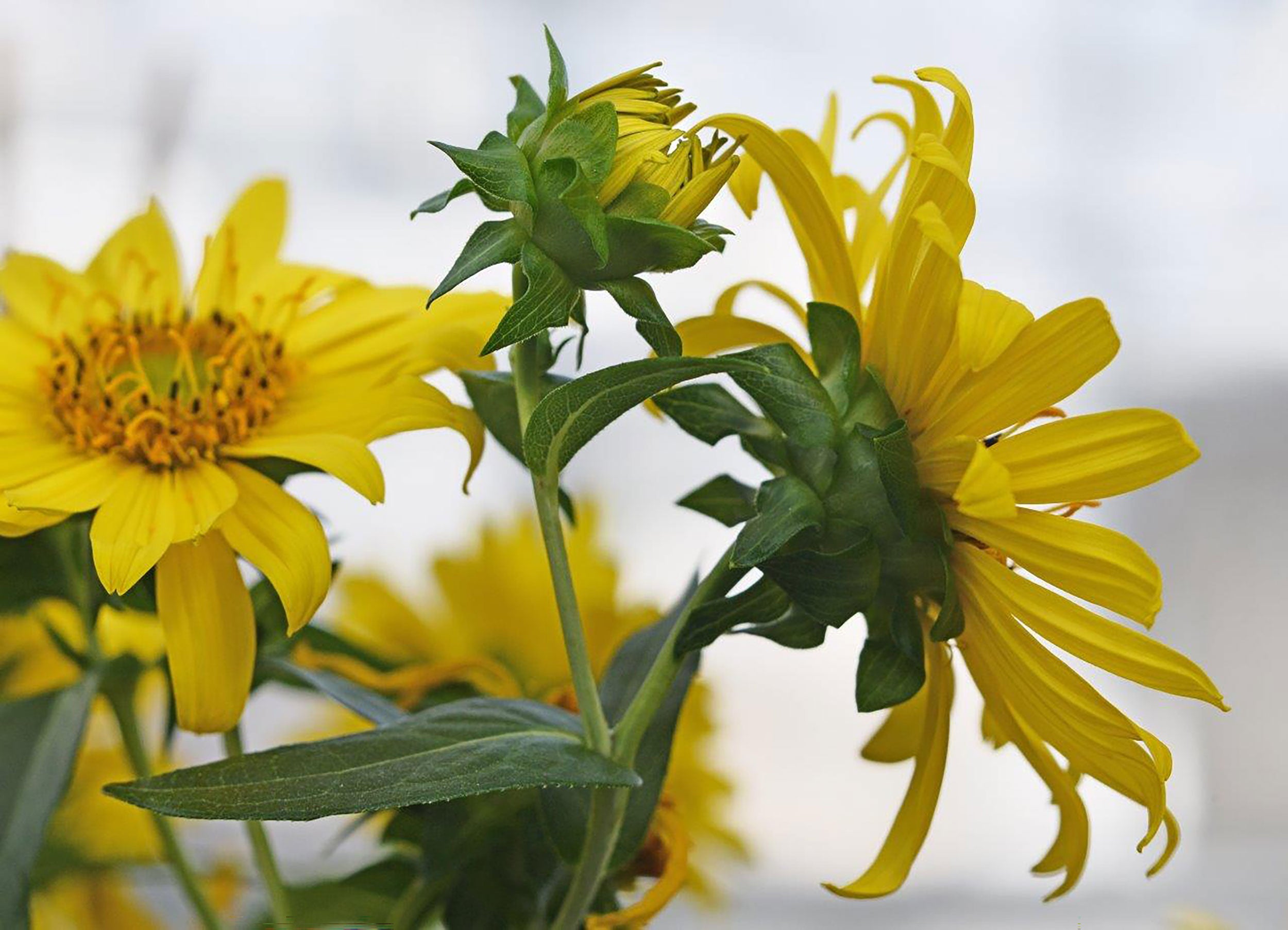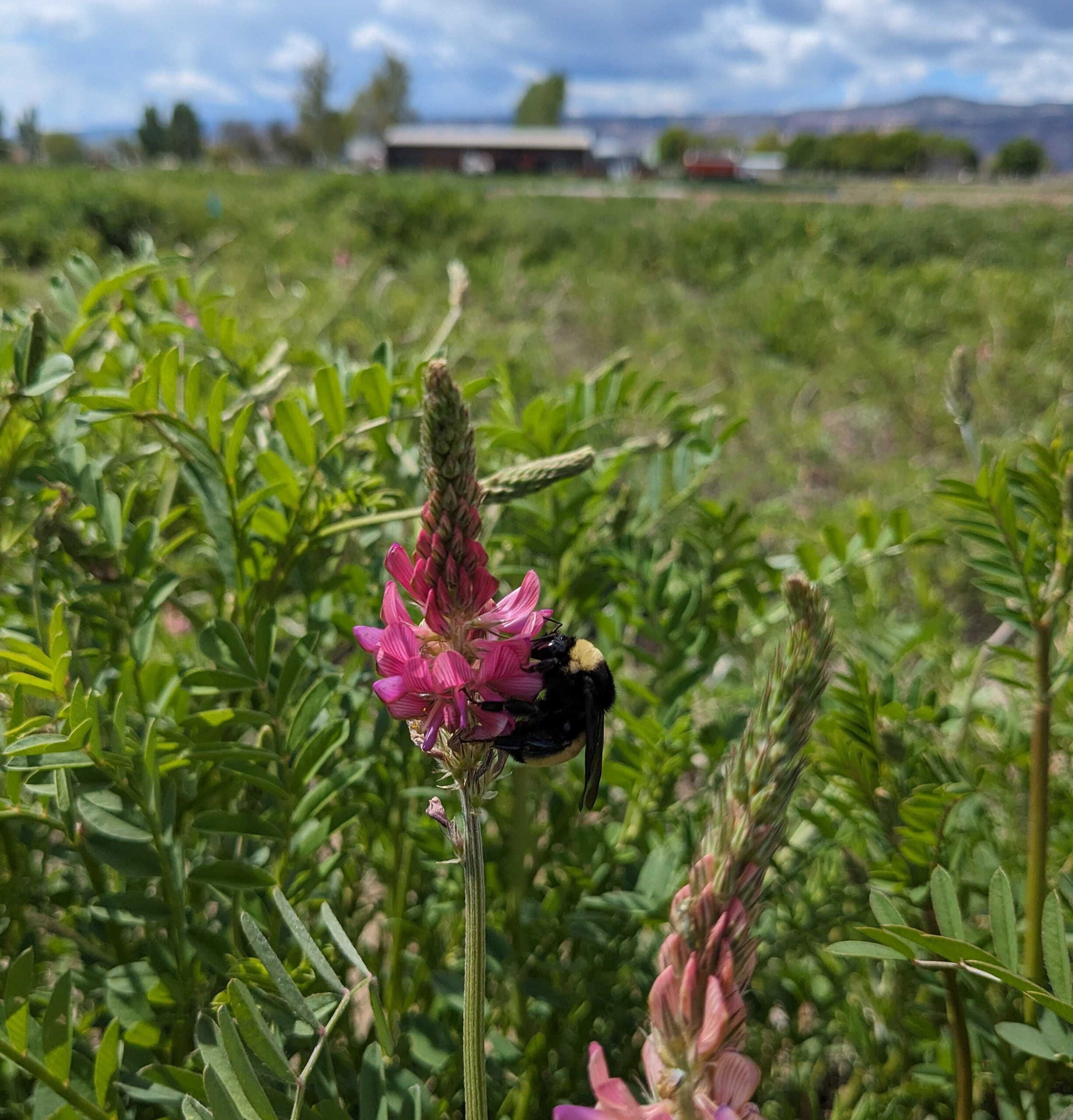In spring 2024, dozens across the nation enthusiastically opened boxes filled with a plethora of crop items — soil probes, a weighing scale, protocol worksheets, seeds, and even some plant seedlings. These volunteers set to work designing research plots, sowing their seeds, and began logging observations about what they grew.
These plants were part of a civic science research initiative known as the Perennial Atlas Project, spearheaded by The Land Institute, a nonprofit based in Kansas. With nearly 200 civic scientists across 46 different states, this project marks one of the Institute’s largest civic science endeavors to date.
The Land Institute, founded in 1976, has a long history of working to develop food production methods that support sustainable agriculture, such as plant diversity and intercrop systems. The organization also achieves this through breeding and developing perennial grain crops.
Most grains — like rice, wheat, corn, or barley — are annual grains, meaning that the plant completes its life cycle every year and dies. Perennial crops, on the other hand, live for longer than a year and can be harvested more than once without having to be replanted.
The Land Institute is researching how perennial grains may be developed and used in place of annual grains, because of the many advantages perennial crops may offer over annual crops.
Perennial crops would not require annual plowing, thus improving soil health and erosion threats, and they could potentially minimize herbicide applications because weeds have fewer opportunities to take root amid well-established crops.
These benefits are why The Land Institute is working to “perennialize” grain crops that are annuals. Annual grains make up nearly 70 percent of global cropland, and being able to transition these crops to perennial systems could potentially save farmers money on operational costs while bolstering soil health.

To determine whether perennial crops have a place in American agriculture, The Land Institute is employing the civic scientists to evaluate the growing potential of three perennial crops compared to their annual counterparts.
To generate these perennial crops, The Land Institute has multiple crop breeding programs that, according to its website, “hold great potential for truly sustainable production systems.”
After years of research and development, scientists at the Land Institute won a grant to further study how these perennialized grain crops compared to their annual counterparts. But instead of just conducting field trial studies on a research station, the team wanted to gather data en masse, across many geographic and environmental climates.
With a history of civic science engagement, the institute decided to develop its research project as a civic science project open to the lower 48, and the Perennial Atlas Project was born.
The Perennial Atlas Project, launched in 2022, aims to develop an “atlas” for three perennial crops the institute has developed — silphium, sainfoin, and perennial flax. These crops are grown alongside their annual counterparts (sunflower, lentil, and annual flax) and are compared to each other in terms of growth, yield, and other metrics.
This project will run for three years, in which participants plant the crop, maintain its growth and development while monitoring for disease and other issues, and harvest the yield to return to the Land Institute for further quantification.

The unique approach of the institute is its decision to make this project a civic science project — meaning participants are not agricultural researchers, but members of the general public.
The term civic science gained traction back in the 1990s and involved the engagement of the general public to address questions at the intersection of society and science.
The Land Institute’s Perennial Atlas Project is therefore not simply a science project, but also a social project to evaluate the challenges involved in community perception of annual grains.
Reece Knapic, civic science research technician and project manager of the Perennial Atlas project, detailed how the project is going so far and his aspirations for the multi-year project.
“The goal is to have a democratic approach to research — and we have over 190 participants that have planted across the nation,” Knapic said.
Knapic joined the Land Institute two years ago to help launch the project to the general public and spends a majority of his time creating educational materials for the project and interfacing with The Land Institute’s scientists.
To delineate the scope of the project’s work to its participants, Knapic develops protocols, surveys, datasheets, and other materials to share on the project’s CitSci webpage, a dedicated forum for community science projects.
On that webpage, Knapic also moderates an open forum where participants can post about how their project is going, post pictures of their plants, ask for help troubleshooting weeds, pests, or anything else they would like to talk about.
Knapic also organizes community calls over Zoom, where participants chat about how things are going and discuss whatever they want to share about the perennial crops.

By engaging citizens across the nation, Knapic hopes to generate a large dataset of observations and information regarding the perennial crops and how they compare to their annual counterparts.
This dataset they’re striving toward will be composed of both scientific data regarding agronomic traits as well as qualitative data regarding social perceptions from participants regarding how they feel about the perennial crop compared to its annual counterpart.
This “atlas” of data is something that Knapic hopes can be used by others — scientists and non-scientists alike.
“[I’d like to] create this atlas of different agronomic traits comparing perennials to annuals across the U.S., generated with this open science approach and the information freely available,” Knapic said.
Of course, generating an atlas of this scope comes with certain challenges. A common issue that civic science projects face is the inevitability of attrition, where participants are no longer engaged in the project over time.
“We knew this would be an issue, and we tried to be preemptive with it by providing a stipend as a support, and as a thank you for participating,” Knapic said. “Of course, people have life circumstances change, like moving, so they can’t continue in their participation.”
Knapic estimates that of the total enrollees, approximately 5 percent have withdrawn, but he also noted that “there are a good amount of folks that are significantly active,” which he deems as a success.
In fact, the level of community engagement he’s seen has been one of the things that’s gone very well.
“I’m thrilled with the number of observations [submitted], and the amount of interaction. CitSci has a pretty active forum, and I can see that there is clear community buy-in, community engagement in this project,” he said.
So far, Knapic says over 1,400 observations have been sent in, and with autumn fast approaching, the first harvest collection wave is soon to come. With that, even more data will be collected.
“There’s been lots of successful establishments, some are struggling, but it’s all good data to see what conditions are ideal [for these crops],” said Knapic. “Ultimately, one of the goals is to inspire more [civic science] work both within our collaborators and hopefully outside of that as well.”

With misinformation about agriculture spreading, bias against agriculture, and even food label misinformation confusing consumers, engaging the general public in civic science can help demystify agriculture and its workings.
As the Perennial Atlas Project progresses, the Land Institute is looking forward to sharing the data they’ve collected, both in agronomic growth potential and community perception and acceptance of these grains as well. The institute hopes to establish these perennial grains as a viable option for American agriculture, and promote sustainable, thriving agricultural operations.
By fostering community engagement through the Perennial Atlas Project, Knapic and The Land Institute hope to educate and inform the general public on how crop breeding can be a useful technique to build resilience in the agricultural sector through perennializing annual crops.
Liza Thuy Nguyen served as the 2023 American Farmland Trust Agriculture Communications Intern at AGDAILY. Liza is originally from Anaheim, California, and attended the University of California, Davis, as a first-generation college student. She received a bachelor’s degree in genetics and genomics and went on to earn a master’s in horticulture from Penn State.



